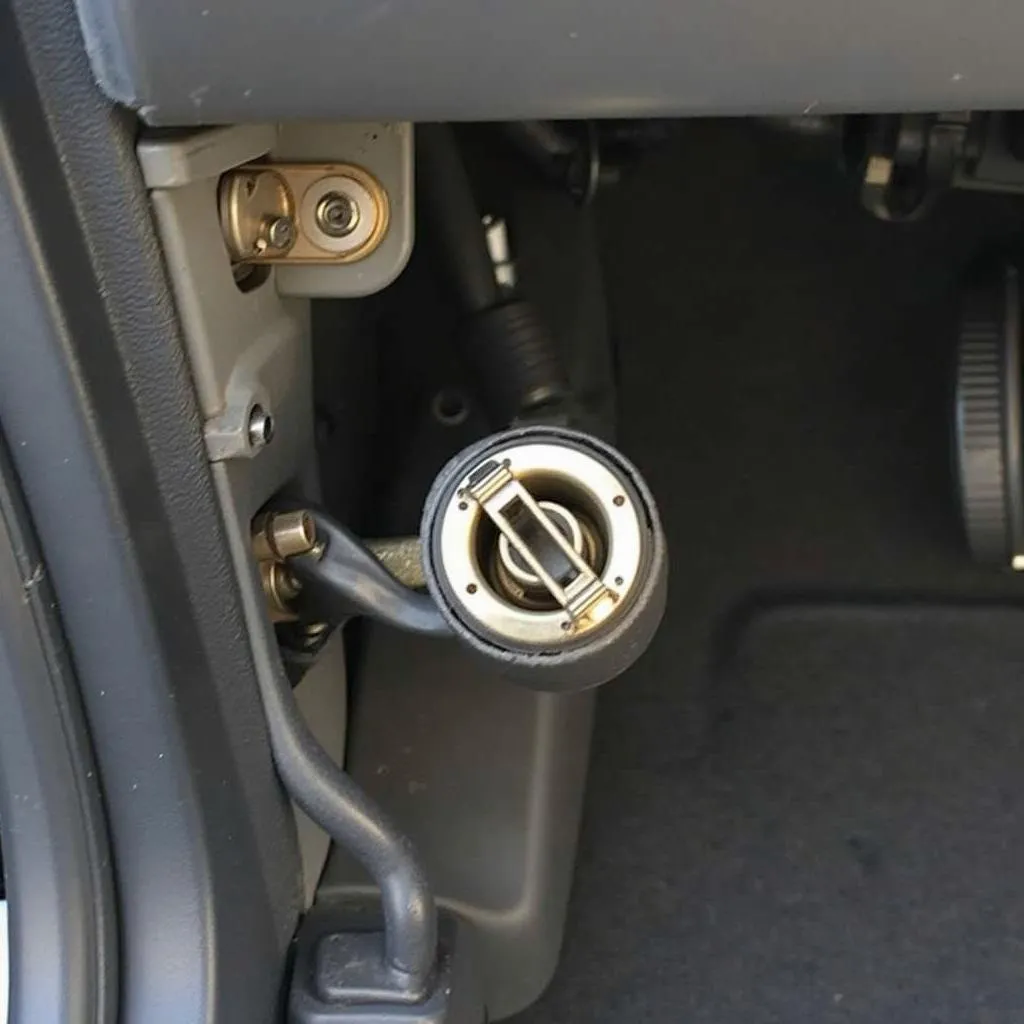Experiencing car trouble? A problem with alternator or battery is often the culprit behind a vehicle that won’t start or experiences electrical issues. Knowing how to differentiate between the two and diagnose the issue can save you time and money. battery problem or alternator This guide will provide you with the essential information you need to understand, diagnose, and address your alternator or battery woes.
Understanding the Roles of Your Alternator and Battery
Your car’s electrical system relies on two key components: the battery and the alternator. The battery provides the initial power to start the engine. Think of it as the jump-start for your car. Once the engine is running, the alternator takes over, generating electricity to power the vehicle’s electrical systems and recharge the battery.  Alternator and Battery Working in Tandem
Alternator and Battery Working in Tandem
Signs of a Failing Alternator
Several symptoms can point to a failing alternator. Dim or flickering headlights are a common indicator, as the alternator struggles to provide sufficient power. You may also experience problems with other electrical components, such as the radio, power windows, or interior lights. A dead battery, especially if it’s new, can also be a sign of a faulty alternator, as it’s not being recharged properly. car battery dead or alternator Finally, a whining or growling noise coming from the engine bay can indicate a worn-out alternator bearing.
Identifying a Bad Battery
A failing battery presents its own set of symptoms. Slow engine cranking is a classic sign, as the battery struggles to provide the necessary power to start the engine. dead alternator or battery You might also notice a clicking sound when you turn the key, indicating a low battery charge. Corroded battery terminals can also prevent the battery from delivering power effectively. Furthermore, a swollen or leaking battery case is a sure sign of a bad battery that needs immediate replacement.
How to Test Your Alternator and Battery
Testing your alternator and battery is relatively simple. You can use a multimeter to check the voltage across the battery terminals. A fully charged battery should read around 12.6 volts. battery problem vs alternator With the engine running, the voltage should increase to around 14 volts, indicating that the alternator is charging the battery. If the voltage remains low with the engine running, the alternator may be faulty.
“A simple voltage test can often pinpoint the source of the problem,” says John Smith, Senior Automotive Electrical Technician at Smith Auto Repair. “This avoids unnecessary part replacements and saves the customer money.”
What Causes Alternator and Battery Problems?
Several factors can contribute to alternator and battery failure. Extreme temperatures, both hot and cold, can shorten the lifespan of these components. Overcharging or undercharging the battery can also lead to premature failure. Additionally, loose or corroded connections can disrupt the flow of electricity and cause problems. good alternator bad battery Finally, age is a natural factor – batteries and alternators have a limited lifespan and will eventually need to be replaced.
Troubleshooting Your Car’s Electrical System
If you suspect a problem with your alternator or battery, it’s essential to address the issue promptly. Ignoring these problems can lead to further damage and leave you stranded. Start by checking the battery terminals for corrosion and cleaning them if necessary. If the problem persists, consider having your vehicle inspected by a qualified mechanic. They can perform more thorough diagnostic tests to pinpoint the faulty component.
“Regular maintenance checks can prevent many alternator and battery issues,” advises Jane Doe, Lead Automotive Instructor at Doe’s Auto School. “Simple tasks like cleaning the battery terminals and checking the drive belt tension can significantly extend the life of these components.”
Conclusion
Dealing with a problem with alternator or battery can be frustrating, but understanding the roles of these components and their common symptoms can empower you to diagnose and resolve the issue effectively. Regular maintenance and timely repairs can ensure your car’s electrical system functions reliably for years to come.
FAQ
-
How long do car batteries typically last? Car batteries typically last between 3 and 5 years.
-
What is the cost of replacing an alternator? The cost of replacing an alternator can vary depending on the make and model of your vehicle, but generally ranges from $300 to $700.
-
Can I jump-start a car with a bad alternator? You can jump-start a car with a bad alternator, but it will likely stall again once the jump-start cables are removed.
-
How can I prevent battery corrosion? Applying a thin layer of dielectric grease to the battery terminals can help prevent corrosion.
-
What is a serpentine belt? The serpentine belt drives the alternator and other engine accessories. A broken or slipping serpentine belt can cause the alternator to stop functioning.
-
Can a bad battery damage the alternator? A bad battery can put extra strain on the alternator, potentially leading to premature failure.
-
What should I do if my car stalls while driving? If your car stalls while driving, safely pull over to the side of the road and seek assistance.


